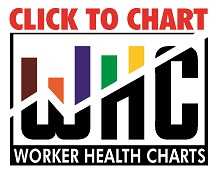Adult Blood Lead Epidemiology and Surveillance (ABLES)

ABLES Data
- Elevated Blood Lead Levels (BLL) among Employed Adults — United States, 2014.
Overall, the national prevalence rate of BLLs ≥10 μg/dL declined from 26.6 adults per 100,000 employed in 2010 (among 37 states) to 19.1 in 2014 (among 26 reporting states). Historically, in the U.S., most lead exposures among adults have been occupational. Among the 3,616 adults with known exposures in 2014, 94.3% had occupational exposures. The majority of these adults were employed in four main industry sectors: manufacturing, construction, services, and mining.
Elevated Blood Lead Levels among Employed Adults — United States, 2014 (Available in Excel) - Blood Lead Level Data – Reported from 1994 through 2012
CDC. Elevated Blood Lead Levels among Employed Adults — United States, 1994–2012. 2015. MMWR 62(54); 52-75 - Blood Lead Level Data – Reported from 2002 through 2005
CDC/NIOSH Adult Blood Lead Epidemiology and Surveillance Program
PDF [PDF – 78 KB]
Available in Excel - Blood Lead Level Data – Reported from 1994 through 2001
CDC/NIOSH Adult Blood Lead Epidemiology and Surveillance Program
PDF [PDF – 55 KB]
Available in Excel
- Page last reviewed: August 10, 2017
- Page last updated: August 10, 2017
- Content source:
- National Institute for Occupational Safety and Health Division of Surveillance, Hazard Evaluations, and Field Studies



 ShareCompartir
ShareCompartir